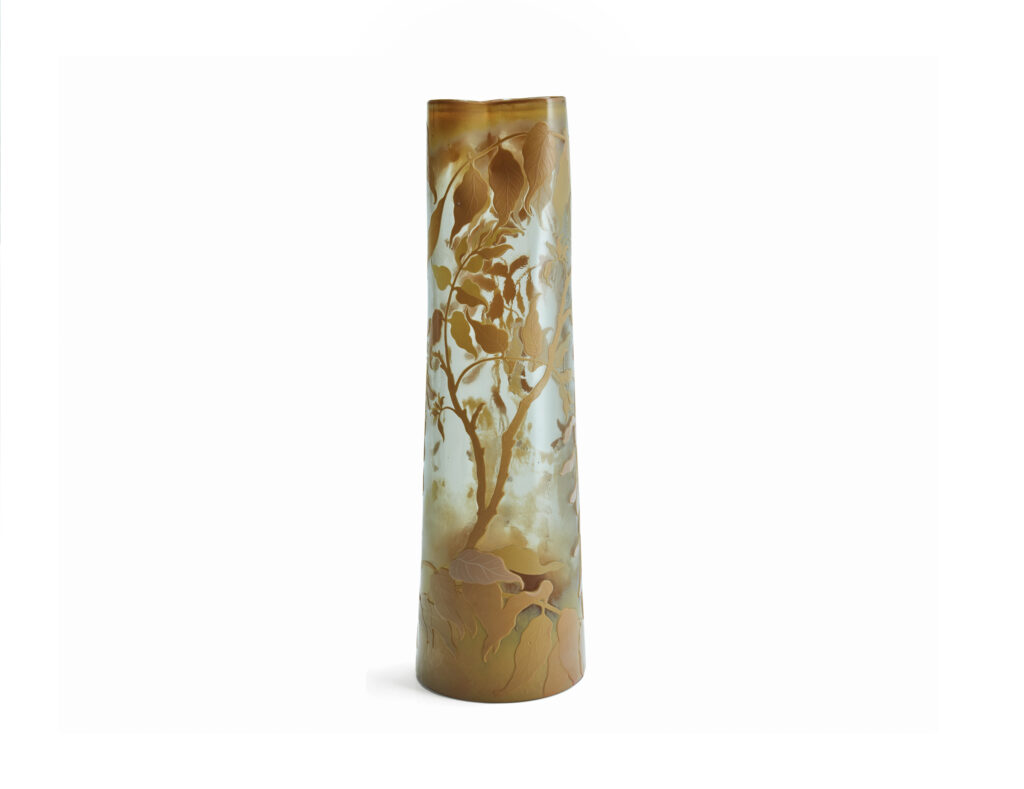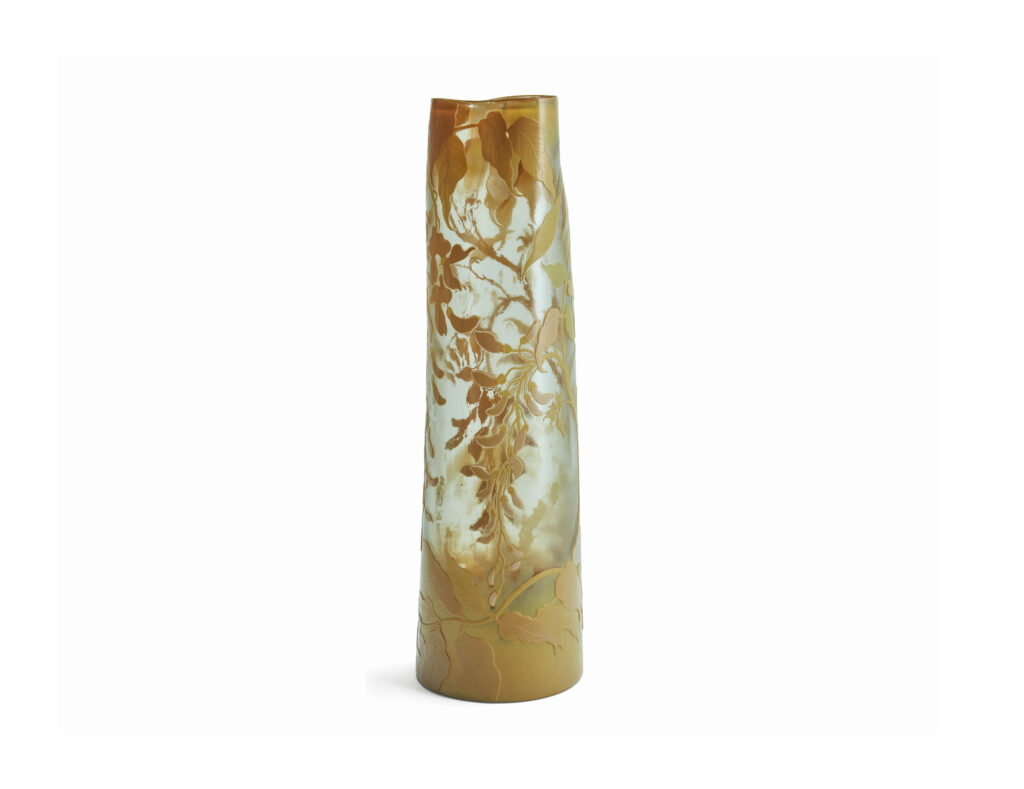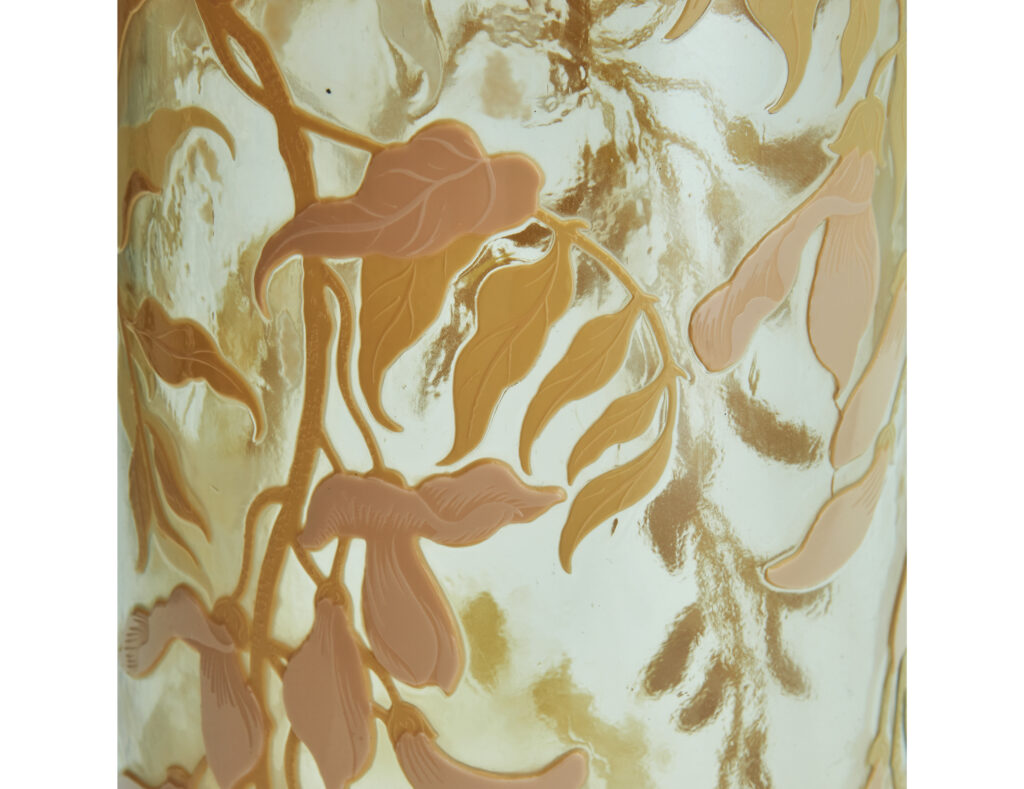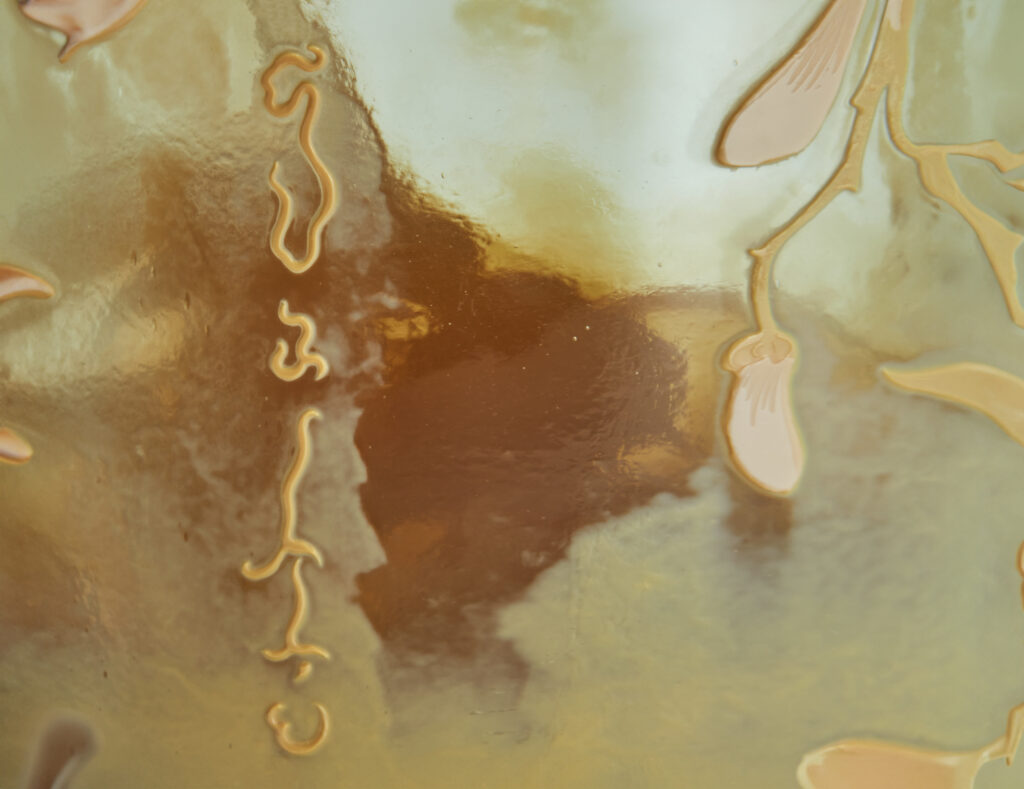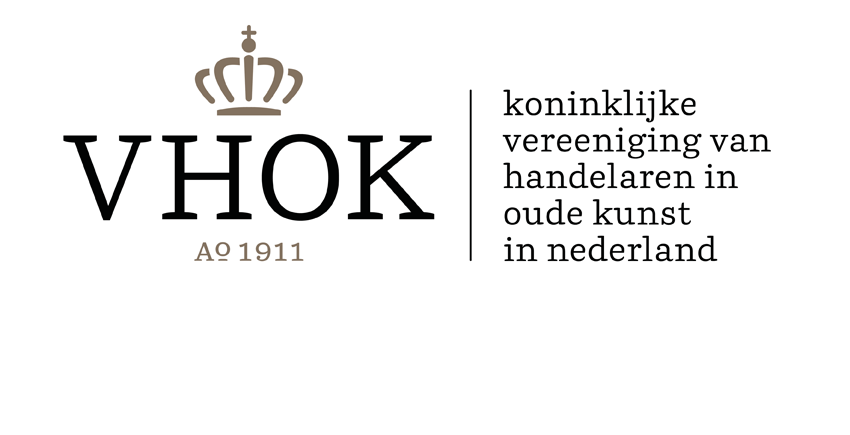Émile Gallé: Master of Cameo Glass and Art Nouveau Visionary
Émile Gallé, one of the foremost figures in the Art Nouveau movement, is celebrated for his pioneering contributions to glassmaking, furniture design, and decorative arts. Born in Nancy, France, in 1846, Gallé drew inspiration from nature, philosophy, and poetry, transforming these influences into stunning, multi-layered glass creations that pushed the boundaries of craftsmanship. His innovative approach, particularly with cameo glass, earned him international acclaim, and he became a leading member of the École de Nancy, a group of artists dedicated to promoting the ideals of Art Nouveau. Gallé’s work embodied the movement’s emphasis on organic forms, fluid lines, and a deep connection to the natural world.
Cameo glass, one of Gallé’s signature techniques, involved layering different colors of glass and carving through them to create intricate designs in relief. His mastery of this complex process allowed him to produce some of the finest glassworks of his era, each piece reflecting his artistic vision and technical prowess.
The Wisteria Cameo Glass Vase by Émile Gallé (circa 1900)
The Wisteria cameo glass vase, created around 1900, stands as a remarkable example of Émile Gallé’s expertise in cameo glass, combining naturalistic motifs with exceptional craftsmanship. This vase, towering at an impressive 44.5 cm, is a museum-quality piece that captures the elegance and sophistication of Gallé’s mature work. It represents the very first design in Gallé’s Wisteria series, which was high likely created in collaboration with the renowned artist Victor Prouvé, a close associate of Gallé and a fellow member of the École de Nancy.
Prouvé, who was instrumental in many of Gallé’s designs, brought his own artistic sensibility to the Wisteria series, helping to shape the delicate, cascading floral motifs that define this collection. This early collaboration between Gallé and Prouvé reflects the fusion of art and nature that is central to the Art Nouveau ethos.
Design and Execution:
- Material and Structure: The vase is constructed from clear glass, over which Gallé applied layers of brown, light brown, and pink glass to create depth and texture. This layered technique, central to cameo glass, involves the careful carving away of outer layers to reveal the colored glass beneath, forming intricate relief designs. The transparency of the clear glass base allows light to pass through the vase, highlighting the delicate carvings and casting subtle shadows that enhance the overall effect.
- Wisteria Motif: The vase features a magnificent wisteria motif, with long, flowing clusters of flowers and leaves hanging gracefully from the top of the vase to the bottom. The wisteria, a symbol of love and devotion, was a favored subject for Gallé, and its natural elegance is beautifully captured in this design. The flowers, carved from light brown and pink glass, appear to cascade down the vase, while the leaves and branches are rendered with exceptional detail, their textures and forms carefully etched into the glass.The interplay between the rich brown tones of the branches, the lighter hues of the flowers, and the subtle pink accents creates a harmonious balance of color. This organic design not only reflects Gallé’s deep admiration for nature but also the collaborative influence of Victor Prouvé, whose keen eye for botanical detail is evident in the careful execution of the motif.
- Color and Contrast: The combination of brown, light brown, and pink glass creates a warm, inviting palette that enhances the natural beauty of the wisteria motif. The colors are carefully chosen to create a sense of depth and realism, with the flowers seeming to float against the clear background. As light passes through the vase, the carved layers come to life, with the colors and shadows shifting subtly depending on the angle and intensity of the light.
- Form and Shape: The vase’s pinched top is characteristic of Gallé’s work during this period, adding a dynamic sculptural element to the overall form. This pinched rim, often used in Gallé’s vases, echoes the fluidity of natural forms and complements the flowing movement of the wisteria motif. The narrowing at the top draws the viewer’s attention downward, following the path of the flowers as they cascade towards the base.
- Signature: The vase is signed with the cameo technique, where Gallé’s name, simply reading “Gallé,” is carved into the lower side of the vase. This signature, subtly incorporated into the design, is typical of Gallé’s pieces from this period. Though understated, it serves as a mark of authenticity, confirming the vase’s provenance and quality.
Historical and Artistic Context
The First Wisteria Design: This vase is especially significant because it represents the first design in Gallé’s Wisteria series, which would go on to become one of his most iconic collections till the late 1920’s. The involvement of Victor Prouvé in the creation of this design underscores the collaborative spirit of the École de Nancy, where artists worked together to develop new forms of artistic expression. Prouvé’s influence is visible in the naturalistic accuracy and fluidity of the wisteria motif, which reflects his background in both art and botanical illustration.
This vase stands as a testament to the innovation of Gallé and Prouvé during a time when Art Nouveau was flourishing, particularly in Nancy, where both artists were central figures. Their shared commitment to blending art and nature is beautifully realized in this piece, which captures the spirit of the movement through its organic forms, intricate details, and harmonious use of color.
Gallé and Nancy: Gallé’s work was closely tied to the city of Nancy, which became a major center for the Art Nouveau movement in France. As a leading member of the École de Nancy, Gallé played a pivotal role in shaping the city’s artistic identity. The École de Nancy, founded in 1901, brought together artists, designers, and craftsmen who were united by a shared vision of art’s role in everyday life. The group emphasized the use of natural forms, craftsmanship, and modern techniques, with the goal of creating a new artistic language that reflected the beauty and complexity of the natural world.
Gallé’s glassworks, particularly his cameo pieces, exemplified the ideals of the École de Nancy. His vases, with their botanical motifs and innovative use of materials, became some of the most admired examples of Art Nouveau glass. Gallé’s ability to combine artistic vision with technical mastery set him apart as one of the most important figures in the decorative arts during this period.
Condition and Provenance
This Wisteria Cameo Glass Vase is in mint condition, a remarkable feat given its age and the delicacy of the materials. It has been meticulously preserved by a private collector in the south of France, and there are no visible signs of wear, damage, or restoration. The clarity of the glass and the precision of the carved details are fully intact, allowing the beauty of Gallé’s craftsmanship to be appreciated in its original form.
The vase’s provenance adds to its significance, coming from a collector who has taken great care to maintain the integrity of the piece. Such well-preserved examples of Gallé’s cameo glass are highly sought after by collectors and museums, making this vase a rare and valuable addition to any collection of Art Nouveau or decorative arts.


